Sad stories of homes that vanished
Discover what happened to Ireland's disappearing house
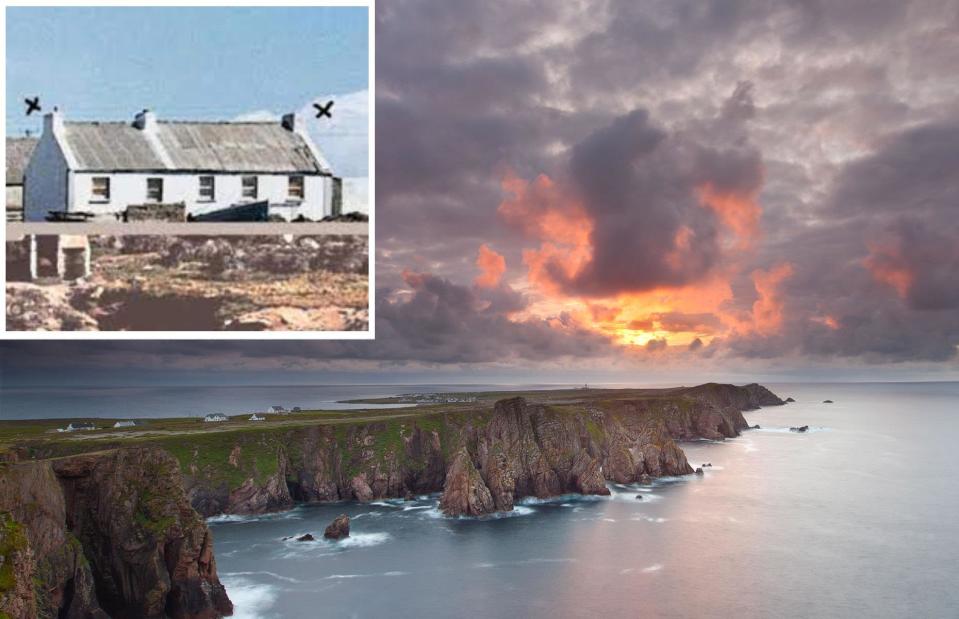
4H4 PH / Shutterstock ; Neville Presho
One of the world's most fascinating real estate mysteries, the tale of this disappearing residence in Ireland has made headlines across the world as would-be sleuths struggle to solve the case. A resident of Tory Island, Ireland, filmmaker Neville Presho’s house was there one day, gone the next. See if you can work out this baffling mystery...
* Prices are in US dollars and British pounds, unless otherwise stated.
A compelling mystery
![<p>Andreas F. Borchert [CC BY-SA 2.0]</p>](https://s.yimg.com/ny/api/res/1.2/L15MTwm80JvAjVUY7AIorA--/YXBwaWQ9aGlnaGxhbmRlcjt3PTk2MDtoPTYxOQ--/https://media.zenfs.com/en/loveproperty_uk_165/424270bc4792dfa871635ac2921ba2d1)
Andreas F. Borchert [CC BY-SA 2.0]
Presho purchased the 150-year-old house on the coastline in the early 80s, before moving to New Zealand. Everything seemed fine until he returned to the island in 1994 and discovered that his house had vanished and that the site where it had once resided was now occupied by a septic tank and a hotel car park.
Remote region
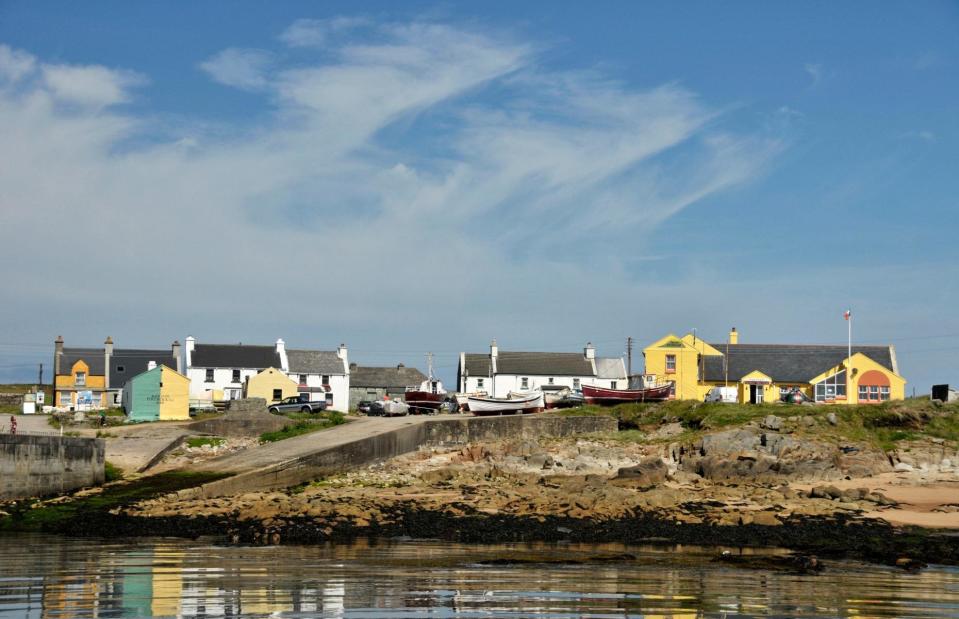
Imagebroker / Alamy Stock Photo
The remote and rugged Tory Island is home to around 120 residents, and the isle captivated Neville Presho when he first visited the region in 1970. It was unusual for an ‘outsider’ to purchase property on Tory Island, but the filmmaker was smitten. And he was understandably crestfallen to find his home had disappeared; BBC News reported that Presho suffered greatly as a result, and was sectioned in mental health wards several times.
Legal action
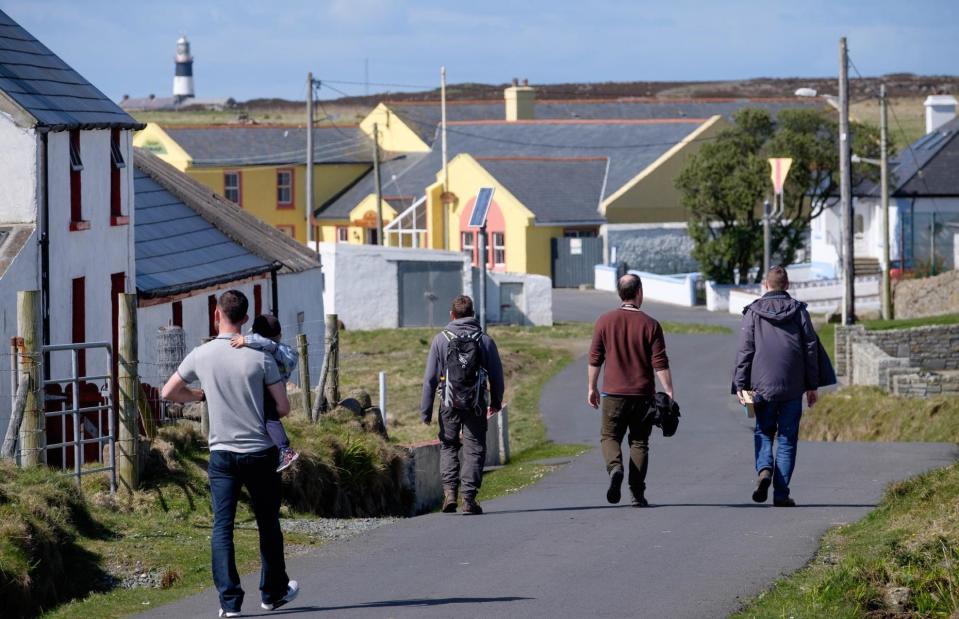
Columba O'Hare / Alamy Stock Photo
Presho swiftly took the hotel owner, Patrick Doohan, to court to find out exactly what had happened. The judge ruled that Doohan should pay the damages and be liable for costs, and awarded Presho €46,000 or $52,000 (£38k), which he deemed insufficient, saying it "wouldn’t build a chicken coop", according to BBC News. The high court discovered that the house had been damaged by fire in 1993 in unexplained circumstances, and subsequently removed over the following nine months, before Mr Presho returned in July 1994.
A curious case - partially - solved
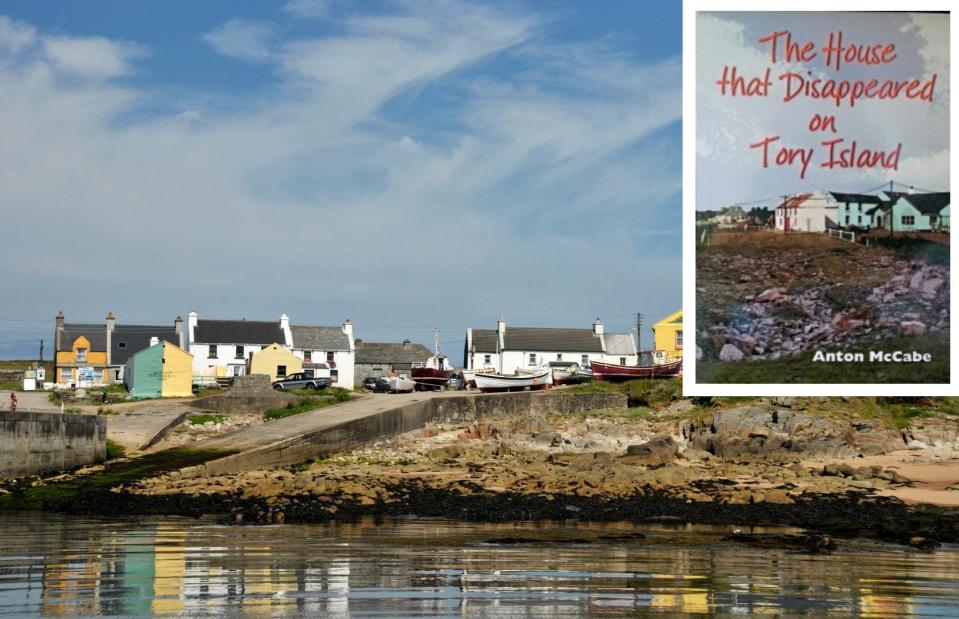
Imagebroker / Alamy Stock Photo / Amazon
Unsurprisingly, the mysterious Wicker Man-esque story has captured the imagination of many and has been turned into a book by Anton McCabe, as well as a BBC Radio 4 series, which tells the fascinating tale over five episodes. How's that for a mystery?
Read on to discover the fascinating stories of more disappearing homes.
READ MORE: Discover the tales behind these vanishing houses
![<p>Bs0u10e01 / Wikimedia Commons [CC BY-SA 3.0]</p>](https://s.yimg.com/ny/api/res/1.2/7K.1daqaStC97fu17OMWpg--/YXBwaWQ9aGlnaGxhbmRlcjt3PTk2MDtoPTYxOQ--/https://media.zenfs.com/en/loveproperty_uk_165/f59fc31a197dce6eab6aadfab15b4377)
Bs0u10e01 / Wikimedia Commons [CC BY-SA 3.0]
Whether ravaged by natural disasters or destroyed by mankind, these unfortunate homes all disappeared from sight. From overnight sinkholes in Florida to historic homes lost forever to the wrecking ball, these outlandish but true tales are stranger than fiction. And any budding detectives among you should pay close attention to the mystery of the ‘vanishing house’ on Tory Island and see if you can work out what really happened... Click or scroll on for more.
Sinking homes in Florida
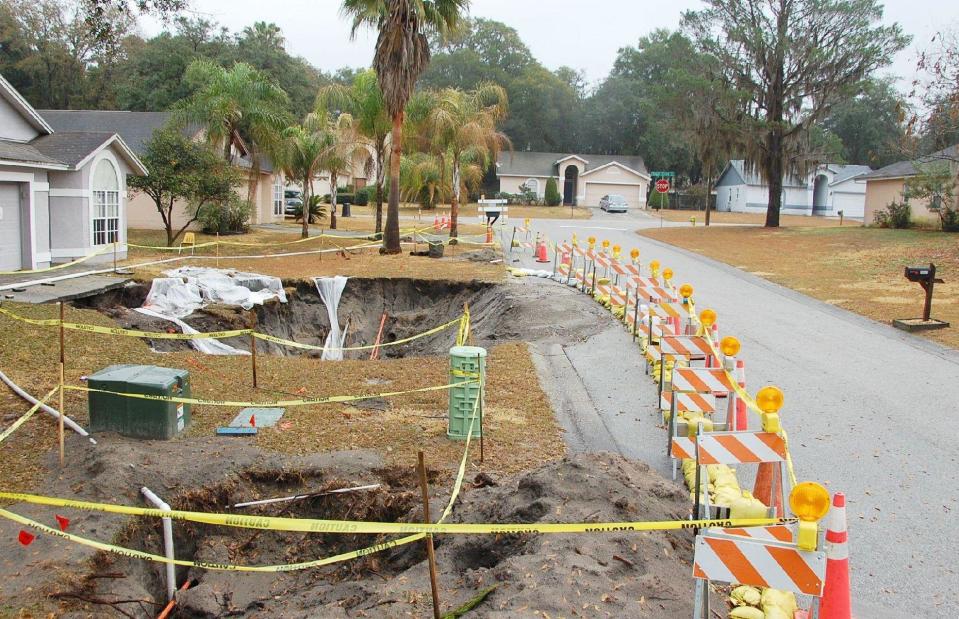
The Color Archives / Alamy
One particularly worrisome way your house might disappear is if it is swallowed up by the ground. Sinkholes are a very real worry for citizens of Florida, the state most at risk of sinkholes in the entire US. Over 110 sinkholes appeared in the Dover area of Florida during a freeze event in 2010, causing the destruction of roads, homes and cultivated areas. According to the US Geological Survey, the sinkholes occurred due to farmers quickly pumping groundwater in anticipation of the freeze.
Marion County sinkhole
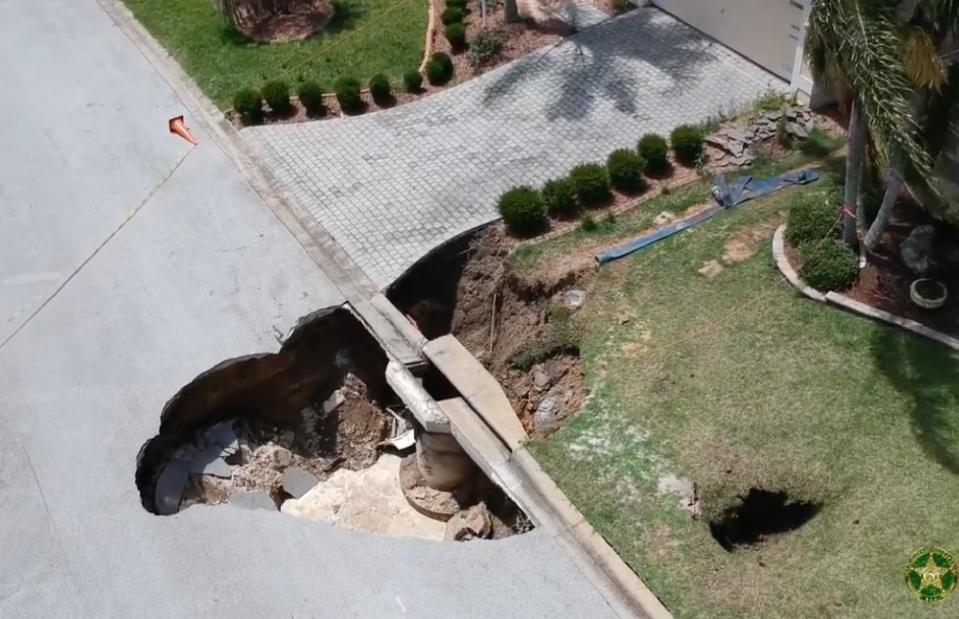
Villages-News.com / YouTube
Florida is particularly affected by sinkholes due to the limestone beneath the ground, which is slowly dissolved by natural acids in the rain and soil, according to the Florida Department of Environmental Protection. They are also a consequence of man-made development, as the weight of buildings and the impression left by vehicles damage the protective layers of soil and aggravate weak points. Marion County, pictured here in a news report, is listed at No. 10 on RiskMeter’s 2011 list of the most sinkhole-prone counties in Florida.
Alachua sinkhole
![<p>Alachua County / Flickr [CC BY 2.0]</p>](https://s.yimg.com/ny/api/res/1.2/W9qYyh35giuBWIypvl2zTA--/YXBwaWQ9aGlnaGxhbmRlcjt3PTk2MDtoPTYxOQ--/https://media.zenfs.com/en/loveproperty_uk_165/df7decbccb3a239f743ab098ab8c4307)
Alachua County / Flickr [CC BY 2.0]
This sinkhole – a whopping 35 by 50 feet in circumference and approximately 10 feet deep – occurred following heavy rain in the city of Alachua, opening in a stormwater retention area near the residential area. Florida Geological Survey geologist Clint Kromhout told the Orlando Sentinel that there have been just four sinkhole deaths reported in the state, and that sinkhole fatalities are “extremely rare”.
Jeffery Bush sinkhole
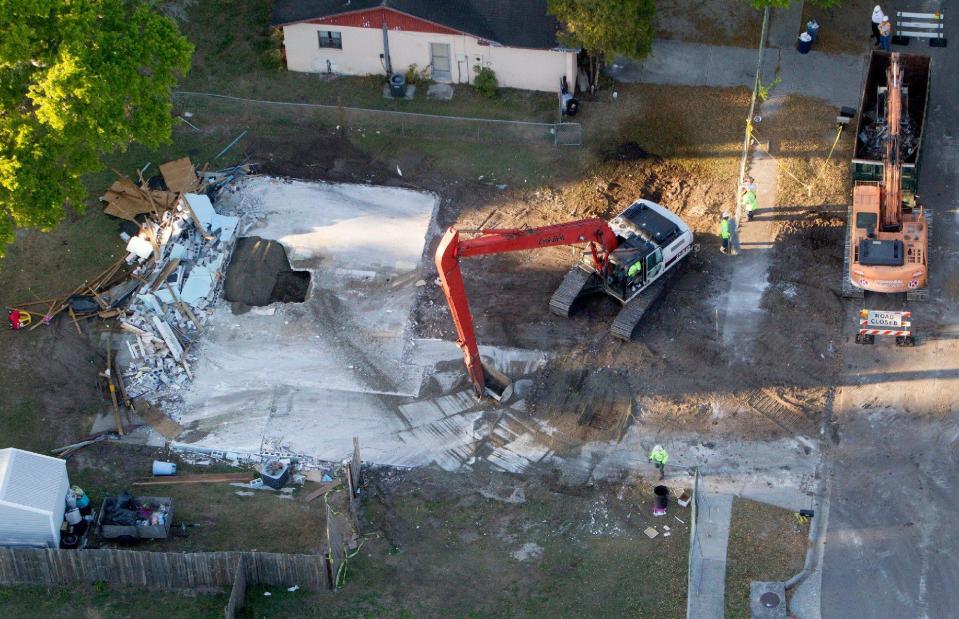
ZUMA Press Inc / Alamy Stock Photo
Another tragic tale in Florida, Jeffrey Bush was sleeping in bed when a giant sinkhole opened up and engulfed his bedroom on February 28, 2013. Despite the desperate attempts of his brother and emergency responders to save him, Bush did not survive the sinkhole, which measured 15 feet wide and 20 feet deep. Indeed, a second collapse swallowed rescue crews’ listening devices as they tried to locate the Floridian. Deemed too dangerous for habitation, the house was later demolished. But that wasn’t the end of this particular sinkhole…
Reoccurring sinkhole
![<p>Hillsborough County Sheriff’s Office / Wikimedia [Public Domain]</p>](https://s.yimg.com/ny/api/res/1.2/jAWXzwKVEmCo.N62hmHRKw--/YXBwaWQ9aGlnaGxhbmRlcjt3PTk2MDtoPTYxOQ--/https://media.zenfs.com/en/loveproperty_uk_165/11e41c9968d347f8bd0281d8032c7be7)
Hillsborough County Sheriff’s Office / Wikimedia [Public Domain]
Another giant sinkhole appeared two years later in the same spot. According to The Washington Post, Hillsborough County Fire Rescue were called to a sinkhole reported in Seffner, a town east of Tampa, confirming it was the same as the one that killed Jeffery Bush in 2013. Fortunately, this time no one was hurt and no homes had to be evacuated because of the 20-foot Hillsborough sinkhole.
Dixie Fire historic blaze
![<p>Frank Schulenburg / Wikimedia Commons [CC BY-SA 4.0]</p>](https://s.yimg.com/ny/api/res/1.2/WefUI.VBzIJm8Dd6zkCyyw--/YXBwaWQ9aGlnaGxhbmRlcjt3PTk2MDtoPTYxOQ--/https://media.zenfs.com/en/loveproperty_uk_165/2c53d42807a59f87800a183fac455a07)
Frank Schulenburg / Wikimedia Commons [CC BY-SA 4.0]
A historic blaze known as the Dixie Fire took place in California in July 2021, destroying nearly one million acres of land over five counties. Reportedly caused by a falling tree hitting electrical distribution lines operated by Pacific Gas & Electric (PG&E), more than 1,300 homes and buildings were said to have been destroyed. With over 963,000 acres of land devastated, it was the second-largest blaze in Californian history.
Dixie Fire historic blaze
![<p>Frank Schulenburg / Wikimedia Commons [CC BY-SA 4.0]</p>](https://s.yimg.com/ny/api/res/1.2/7jDW.AZ0K1.dNZQtQSlMJQ--/YXBwaWQ9aGlnaGxhbmRlcjt3PTk2MDtoPTYxOQ--/https://media.zenfs.com/en/loveproperty_uk_165/9fc7d629ab16535a85f03bfcfb86d9ef)
Frank Schulenburg / Wikimedia Commons [CC BY-SA 4.0]
PG&E stated that the tree in question "was one of more than 8 million trees within strike distance to PG&E lines,” as reported by Sky News. The utility company promised to take further preventative measures to ensure the catastrophe wouldn’t happen again, burying 10,000 miles of power lines and shutting off power to customers during high winds that could knock branches onto lines.
Dixie Fire historic blaze
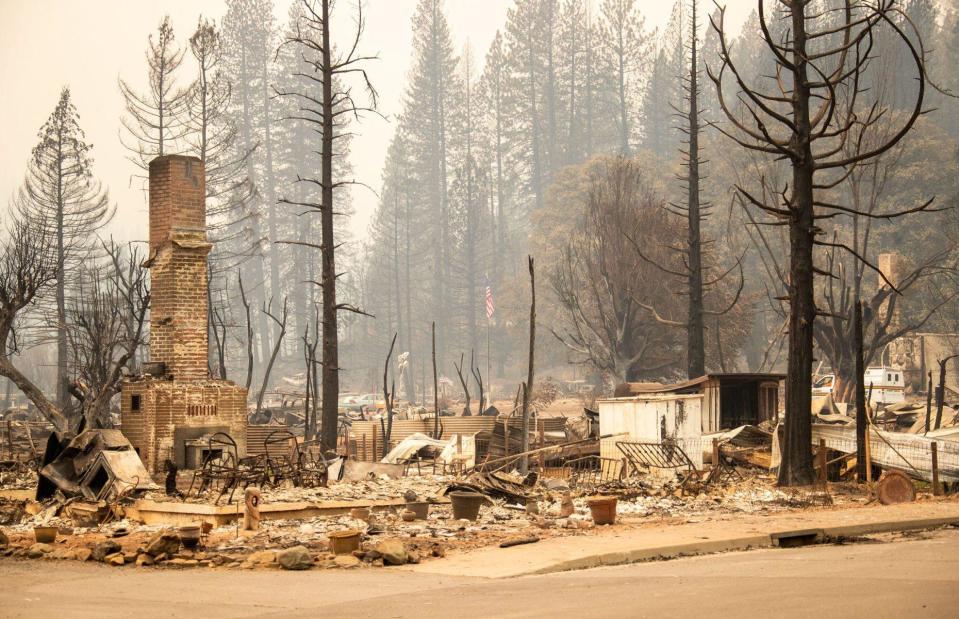
Dong Xudong / Xinhua / Alamy Live News
The ferocity of Californian wildfires has in recent years been exacerbated by climate change-induced heatwaves and a historic drought. However, PG&E equipment has been accused of sparking several of these most deadly fires, including the Zogg Fire 2020, which killed four citizens and reportedly destroyed approximately 200 homes. According to Sky News, the utility company were charged with involuntary manslaughter and other crimes.
Dixie Fire historic blaze
![<p>Felton Davis / Flickr [CC BY 2.0]</p>](https://s.yimg.com/ny/api/res/1.2/xOjpvKeKWuxhe5vn2fHuAA--/YXBwaWQ9aGlnaGxhbmRlcjt3PTk2MDtoPTYxOQ--/https://media.zenfs.com/en/loveproperty_uk_165/746bf8967176dd69b68888371b14f049)
Felton Davis / Flickr [CC BY 2.0]
The Dixie Fire was active for over a month, and was the first fire known to have burned across the crest of the Sierra Nevada, according to The Washington Post. Thousands of Californians were forced to evacuate their homes, as numerous buildings were completely destroyed or left with just their frames still standing. According to the California Governor’s Office of Emergency Services, over 16,000 citizens were under evacuation orders in El Dorado County within days of the fire sparking.
Dixie Fire historic blaze
![<p>Lassen National Forest / Flickr [Public Domain]</p>](https://s.yimg.com/ny/api/res/1.2/yoirbVXoojD73DZ1Y1gEjQ--/YXBwaWQ9aGlnaGxhbmRlcjt3PTk2MDtoPTYxOQ--/https://media.zenfs.com/en/loveproperty_uk_165/2dee0ba128de4b05677e9b4ffcfab3e5)
Lassen National Forest / Flickr [Public Domain]
The Hawaiian Volcanoes National Park Fire Crew, pictured, made up some of the 240 firefighters struggling to battle the epic blaze. The firefighters' resources were already stretched, having responded to around a hundred fires nationally due to a particularly rampant wildfire season. Out-of-state assistance was required to help fight the historic wildfires that had spread so rapidly across California.
Coastal erosion, Australia
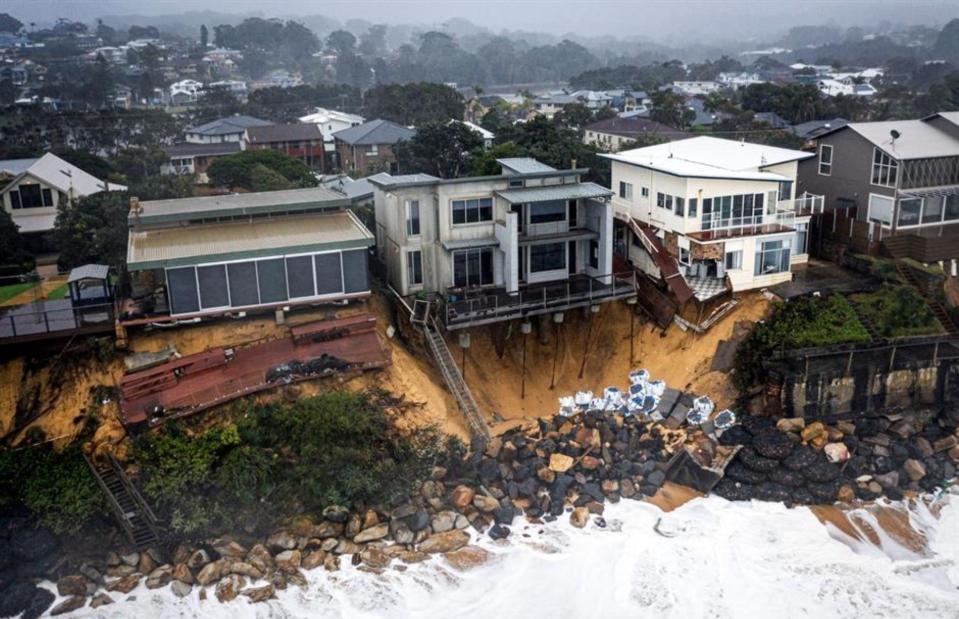
Brook Mitchell / Getty Images
While a beachfront home in sunny Australia might sound appealing to those of us toughing out a frosty winter, these coastal houses in New South Wales would turn that particular dream into a nightmare. The unreliable climate and rising sea levels of the Wamberal coastline mean these houses have been falling victim to coastal erosion since the 1970s.
Coastal erosion, Australia
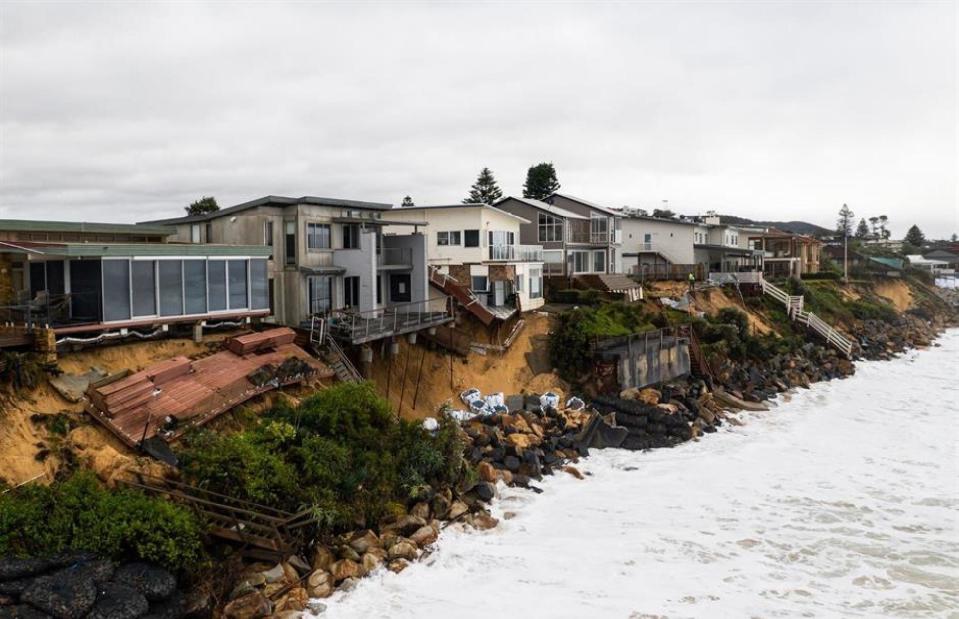
Brook Mitchell / Getty Images
Residential homes across the shore enjoy more than their fair share of ocean views, but are slowly being swallowed up by the sea. The locals are understandably upset with the region's authorities, who have not acted upon proposals to build a seawall to protect what’s left of the coastline’s properties.
Coastal erosion, Norfolk
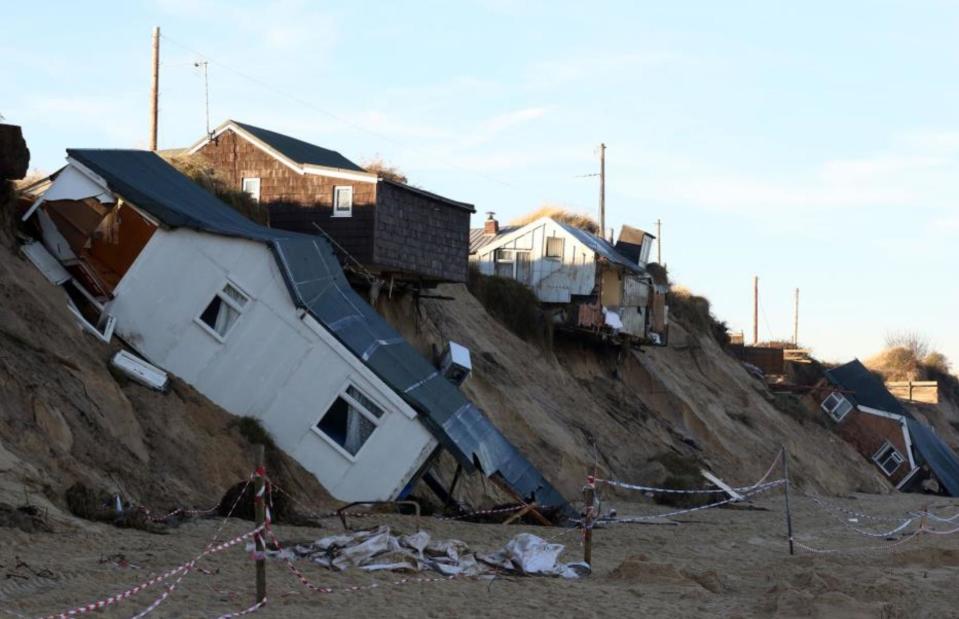
Chris Radburn / PA Images
More idyllic coastline beckons, in the form of the village of Hemsby on Britain's Norfolk coast. However, these alluring sandy vistas are just as dangerous as the house-swallowing seas of Australia. Here, the seafront houses fall prey to an ever-eroding coastline, not helped by a particularly destructive storm in 2013, which completely destroyed seven properties, and left many more damaged.
Coastal erosion, Norfolk
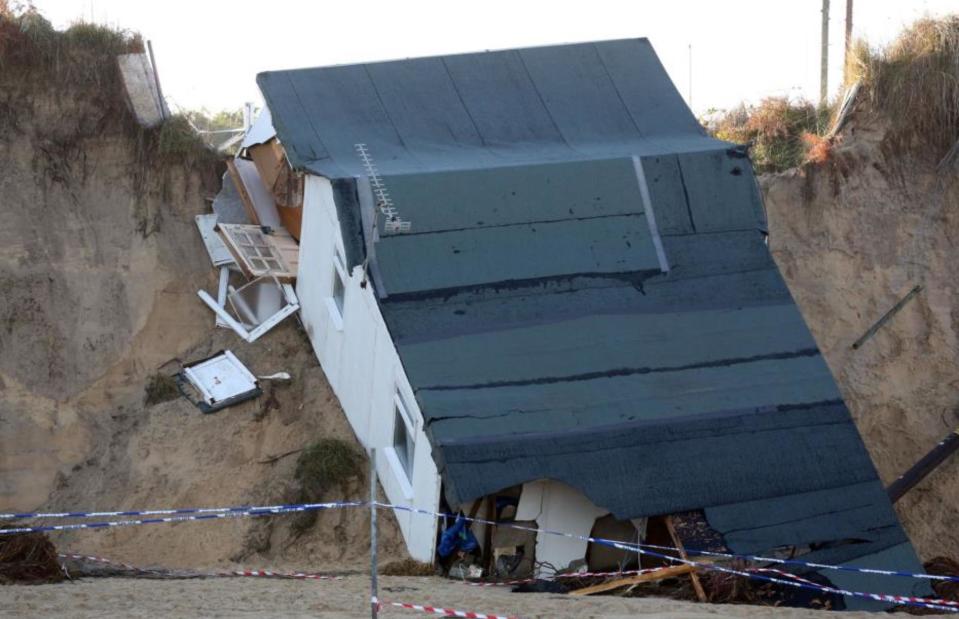
Chris Radburn / PA Images
Over the last 10 years, approximately 65 feet of sand dunes have disappeared into the sea as the coastline has eroded faster than ever, thanks to extreme winters, storms and rising tides. In 2018, further disaster struck when the 'Beast from the East’ storm destroyed 13 homes along the seafront.
Coastal erosion, Norfolk
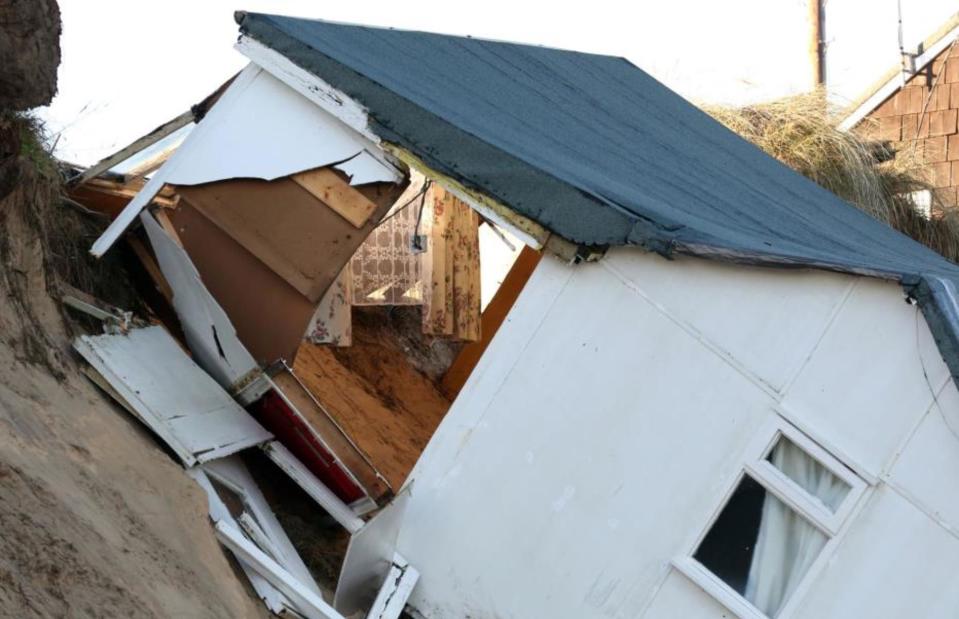
Chris Radburn / PA Images
Norfolk's appealingly soft sand and clay coastline has been naturally eroding for centuries, but climate change and the resulting rising sea levels have exacerbated the problem. The Save Hemsby Coastline campaign is calling on authorities to "invest in more robust sea defenses" to protect the community, according to News EU. Battling for survival against the sea, let's hope the village can triumph over this threat of collapse.
Sandstorms, Sharjah

Katiekk / Shutterstock
While the sea poses an immediate threat to some houses, sand can be just as problematic for others. The village of Al Madam in Sharjah, United Arab Emirates, has been engulfed by desert sand, leaving nothing more than rooftops in sight. Vanishing into the dunes, the ghost town has been left uninhabited for over 30 years.
Sandstorms, Sharjah

Frankris / Shutterstock
Sand can be seen flowing through windows and doors, swallowing up corridors and entire buildings. Many of the homes are believed to have been hastily deserted, with belongings left in their rooms. Al Madam has become somewhat of a tourist attraction, however, as visitors travel to the spooky abandoned village to photograph what remains.
Sandstorms, Kolmanskop

Anton_Ivanov / Shutterstock
Another disappearing community lost to sand is the mining settlement of Kolmanskop, in the Namib Desert of Southern Africa. Producing 11.7% of the world’s diamonds, this town was one of the richest in the world in the early 1900s. However, according to National Geographic, intensive mining had depleted the area by the 1930s. In 1928, the richest diamond fields were found on the beach terraces to the south, pushing residents to leave the town in their hordes.
Sandstorms, Kolmanskop
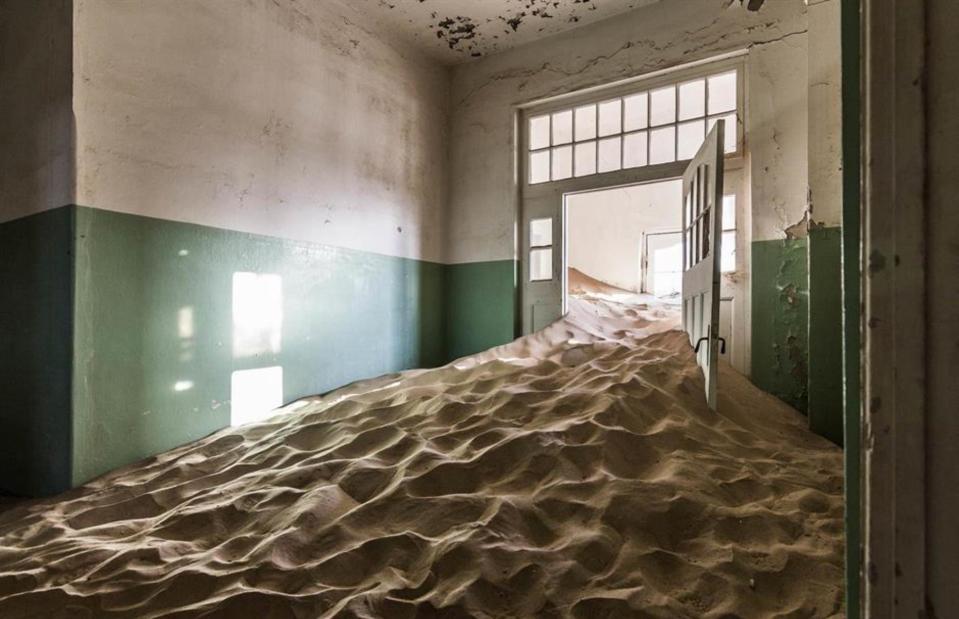
gregorioa / Shutterstock
Deserting their homes and belongings, the townspeople abandoned Kolmanskop in droves. By 1956, the once-affluent community with its own railway station and outdoor swimming pool had become a ghost town. Sand dunes have blown through doors and windows, engulfing every building within the village, such as this hospital pictured.
Sandstorms, Kolmanskop
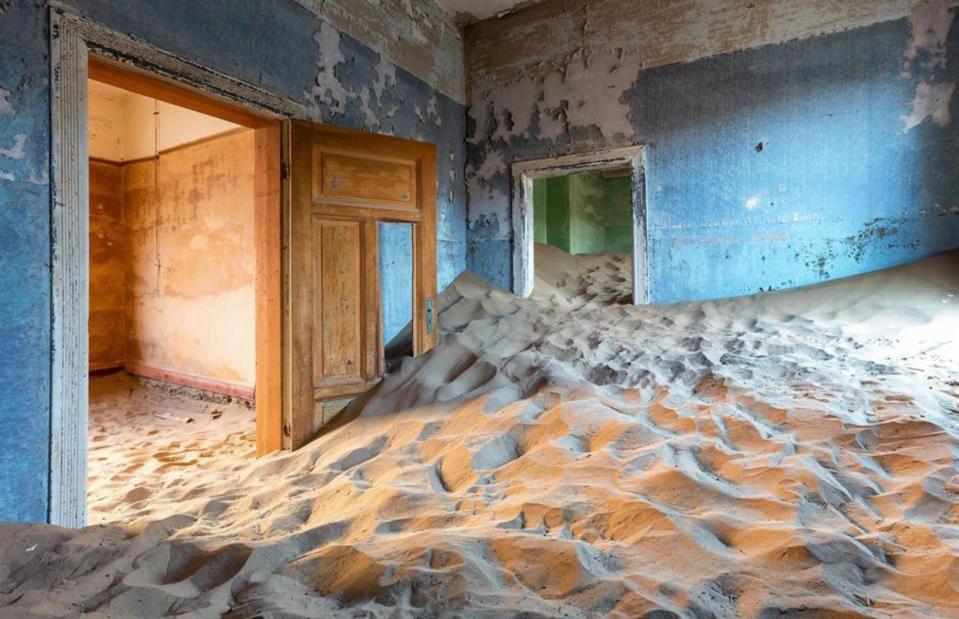
Kanuman / Shutterstock
In 2002, a private company won funding to transform the abandoned village into a tourist attraction. Thanks to Ghost Town Tours, several of the historic buildings have since been restored, and as many as 35,000 tourists visit the site annually, contributing financially to the nearby coastal town of Lüderitz.
Demolished historic mansions
![<p>Thomas Allom / Wikimedia Commons [Public Domain]</p>](https://s.yimg.com/ny/api/res/1.2/ftXA3dLfMQTCx4InMlrqvQ--/YXBwaWQ9aGlnaGxhbmRlcjt3PTk2MDtoPTYxOQ--/https://media.zenfs.com/en/loveproperty_uk_165/9a8cf5ad6f49c72c4ab086f4408769e9)
Thomas Allom / Wikimedia Commons [Public Domain]
While nature can be a cruel beast, decimating homes in its wake, sometimes the destruction is man-made. Belonging to the Duke of Norfolk from 1483, Deepdene House in Surrey was a sprawling estate adorned with elaborate planted gardens, conservatories and orangeries. Purchased by Thomas Hope in 1807, the grounds were extended further and Deepdene became one of the grandest mansions in Britain.
Demolished historic mansions
![<p>Ian Capper / Geograph [CC BY-SA 2.0]</p>](https://s.yimg.com/ny/api/res/1.2/JbYO0B2qZwL93n4aPfolRg--/YXBwaWQ9aGlnaGxhbmRlcjt3PTk2MDtoPTYxOQ--/https://media.zenfs.com/en/loveproperty_uk_165/c9739681bc7167156ba5030c22e823fe)
Ian Capper / Geograph [CC BY-SA 2.0]
Come 1967, however, the stately home was demolished and the grounds transformed into Dorking bypass. Across the site of Deepdene today sits a building containing the offices of Kuoni Travel. Unfortunately, this historic mansion demolition story isn’t unique. According to historian Giles Worsley, 1,200 country houses have been demolished in England since 1900, due to numerous factors including war and the changing social landscape, which prioritises infrastructure such as new motorways.
Demolished historic mansions
![<p>antiqueprints.com / Wikimedia Commons [Public Domain]</p>](https://s.yimg.com/ny/api/res/1.2/tl7XKzEgSc_5Rq6cE1nyaA--/YXBwaWQ9aGlnaGxhbmRlcjt3PTk2MDtoPTYxOQ--/https://media.zenfs.com/en/loveproperty_uk_165/3e15f04b77936928dd47538b66f76a9c)
antiqueprints.com / Wikimedia Commons [Public Domain]
Cassiobury House is another stunning country house that fell victim to demolition. Located in Cassiobury Park in Watford, England, the Tudor building was built in 1546 for Sir Richard Morrisson before undergoing remodeling in the 17th and 19th centuries. Cassiobury House was slowly sold off for housing development purposes and was ultimately knocked down in 1927.
Demolished historic mansions
![<p>Nigel Cox / Geograph [CC BY-SA 2.0]</p>](https://s.yimg.com/ny/api/res/1.2/bSPsscKxYkVc2lRKKA9iTA--/YXBwaWQ9aGlnaGxhbmRlcjt3PTk2MDtoPTYxOQ--/https://media.zenfs.com/en/loveproperty_uk_165/7a900fdf5c986d37dca17bfd9a40e490)
Nigel Cox / Geograph [CC BY-SA 2.0]
Pictured here in 2005, the Cassiobury grounds are now a housing estate, while the surrounding Cassiobury Park was turned into the main public open space in Watford. As was the case with many country houses that were sold off, assets from the estate were bought up by museums and collections, including artworks and other valuable possessions.
Demolished historic mansions
![<p>Unknown photographer / William Salt Library [Public Domain]</p>](https://s.yimg.com/ny/api/res/1.2/TLbzo55T976B79HLALHUFw--/YXBwaWQ9aGlnaGxhbmRlcjt3PTk2MDtoPTYxOQ--/https://media.zenfs.com/en/loveproperty_uk_165/2293ab05007478f02e9f811131909724)
Unknown photographer / William Salt Library [Public Domain]
The seat of the Pagets, Earls of Uxbridge and Marquesses of Anglesey, from 1546 to 1935, Beaudesert Hall in Staffordshire was last occupied by Henry Paget, the 5th Marquess of Anglesey. Known as the ‘Dancing Marquess’ for his snake-like dance routines, he wasn’t so adept with his finances and died bankrupt in 1904. His Beaudesert Estate was then sold off in 1932, having remained in the family for nearly 400 years.
Demolished historic mansions
![<p>Bs0u10e01 / Wikimedia Commons [CC BY-SA 3.0]</p>](https://s.yimg.com/ny/api/res/1.2/w0ObFQfHBrF3OaCm2YjvVw--/YXBwaWQ9aGlnaGxhbmRlcjt3PTk2MDtoPTYxOQ--/https://media.zenfs.com/en/loveproperty_uk_165/dc7aa43f7b78fe1272dbd243576aee82)
Bs0u10e01 / Wikimedia Commons [CC BY-SA 3.0]
Today, Beaudesert exists in name and ruins alone. Perhaps financially cursed, even the contractors booked to demolish the struggling stately home went bust before they could complete the job. The ruins were protected with Grade II-listed building status in 1953, after Lord Angelsey donated 124 acres in 1937, to be used recreationally by scouts and guides and for other, similar purposes.
Vanishing skyscrapers, China

New China TV / YouTube
After sitting unfinished for seven years, 15 high-rise buildings in Kunming, China were destroyed in just 45 seconds. Captured here by New China TV, onlookers videoed the controlled demolition project as each building disappeared into rubble. Residents of the Yunnan province were left discussing the consequences of unplanned urbanization projects as the videos went viral online.
Vanishing skyscrapers, China

New China TV / YouTube
According to China’s state-run Xinhua News, 4.6 tons of explosives were used to demolish the abandoned skyscrapers, carefully placed at 85,000 blasting points within the buildings. Kunming Daily reported that over 2,000 support personnel were dispatched, setting up eight emergency rescue teams to ensure the process was successful and safe. These included flood control, fire rescue and urban management logistics teams.
Vanishing skyscrapers, China

New China TV / YouTube
Neighbouring buildings and shops were evacuated as part of a detailed, coordinated plan. But why were they demolished in the first place? According to Yahoo News, authorities decided to destroy the buildings as they had been left abandoned, with their basements submerged in water. Taiwan News stated that the buildings, worth $154 million (£114m), were part of an unfinished housing project initiated in 2011.
Vanishing skyscrapers, China

@sunny051488 / Twitter
However, this is not the first time simultaneous large-scale demolitions have been carried out in China. In 2017, 36 buildings were destroyed in around 20 seconds in Zhengzhou, the capital city of China's Henan Province. A similar video, filmed from a nearby balcony, captures the 36 tower blocks and skyscrapers destroyed and turned to dust across the ground in a matter of seconds.
Vanishing skyscrapers, China

@sunny051488 / Twitter
Using 2.5 tons of dynamite, the plan was to renovate and upgrade the area into an ‘urban village’. Uploaded to YouTube by New China, the video depicts the destruction from above and states, "There were once over 800 buildings in Chenzai, which covers 0.89 sq km". On social media residents have pointed out the lack of demand for property in the country, while the Government continues to fund new building projects.
Nuclear accident, Zalissya
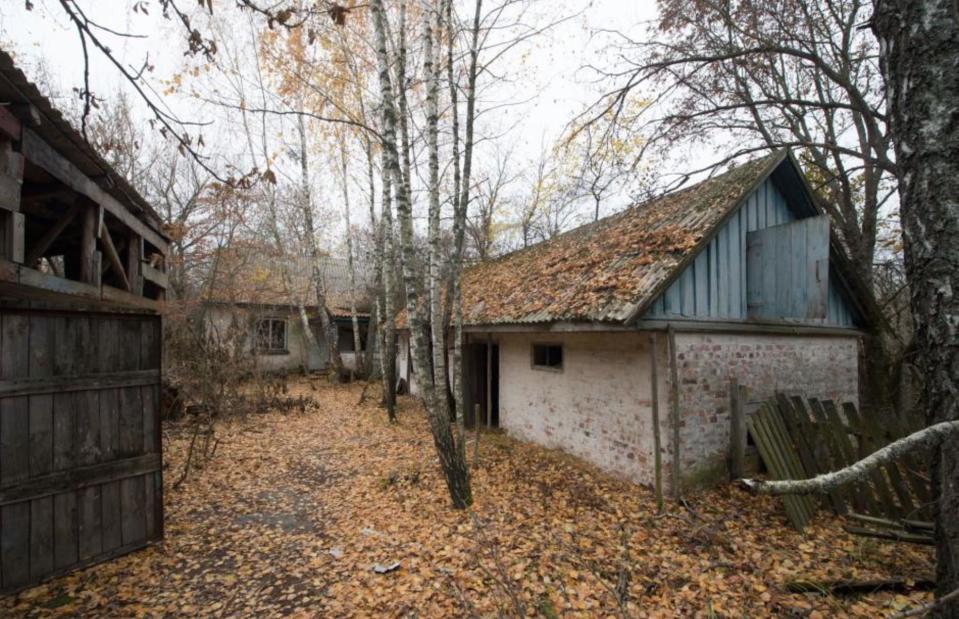
Pauletto Francois / ABACA / PA Images
Within the Chernobyl Exclusion Zone you’ll find the village of Zalissya. Or, actually, you won’t find it, as the town has been strictly out-of-bounds to the public since the infamous 1986 nuclear accident. The town remains an authentic snapshot of a mid-1980’s Ukrainian village, and tourists are now able to explore the only two abandoned streets of the town open to visitors. These homes haven’t vanished so much as they've been preserved and engulfed by nature.
Nuclear accident, Zalissya
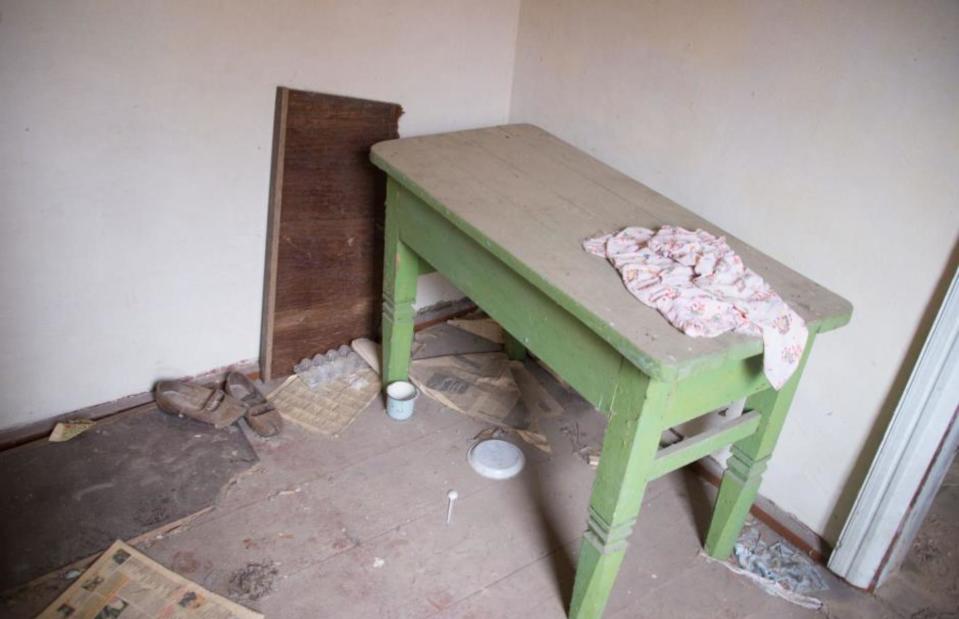
Pauletto Francois / ABACA / PA Images
A propaganda banner reading “Communism is a bright future of the humankind” still stands proudly over a stage in the abandoned theater. More recently, local wildlife has flourished in the village, and tourists might be able to spot Przewalski’s horses in the surrounding former farmer’s fields during spring and autumn. According to Chernobyl Story, the radiation level is "one of the lowest around the zone: 0.13-0.15 μSv/hour".
Nuclear accident, Pripyat
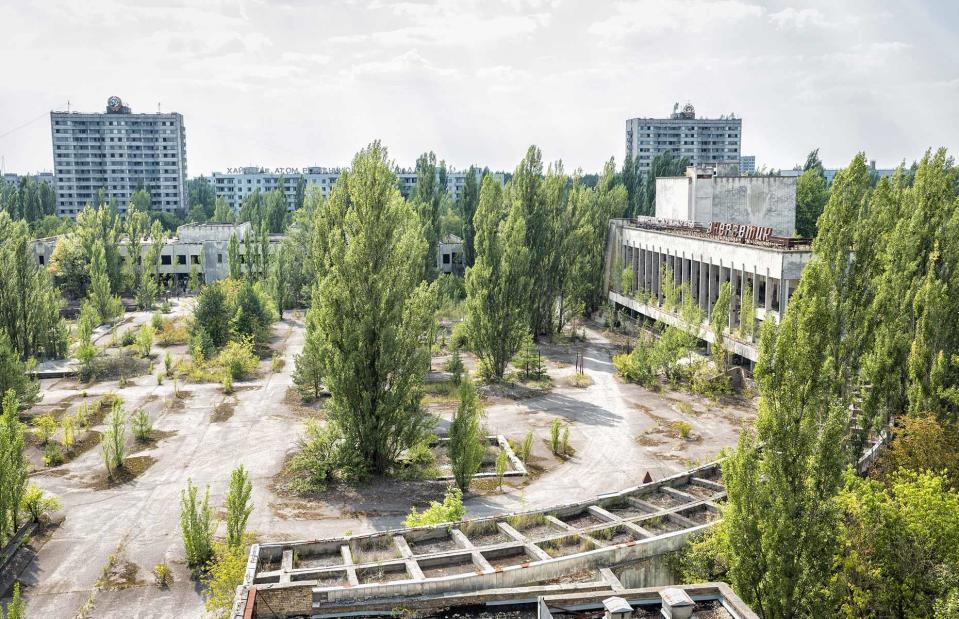
Oriole Gin / Shutterstock
The city of Pripyat was founded in 1970 to serve the Chernobyl Nuclear Power Plant workers and their families. By 1979, the Ukrainian urban area hosted a population of 47,500 within 160 apartment blocks and boasted a railway station, a hospital, multiple shopping malls, five secondary schools, gyms and its own cinema.
Nuclear accident, Pripyat

Tijuana2014 / Shutterstock
After the 1986 nuclear disaster struck and an exclusion zone was established, Pripyat was evacuated, and remains frozen in time. Although the immediate area will not be fit for habitation for another 3,000 years, according to a 2016 study by Greenpeace, tourists are allowed to visit – albeit briefly. Meanwhile, Mother Nature has taken over and animal life has thrived amid the abandoned concrete, with deer, bears, foxes and more spotted enjoying the quiet of the abandoned city.
Nuclear test site house
![<p>National Archives Catalog [Public Domain]</p>](https://s.yimg.com/ny/api/res/1.2/JaOtSJf0hBDkZDJBsMrMfg--/YXBwaWQ9aGlnaGxhbmRlcjt3PTk2MDtoPTYxOQ--/https://media.zenfs.com/en/loveproperty_uk_165/6cb07e420a40c9d273ca8a886a9ed5d6)
National Archives Catalog [Public Domain]
Nicknamed Survival Town, this home was built as part of an experiment known as Apple II. It was designed by the US Government to test the resilience of different building materials in the vicinity of a blast site. In May 1955, they detonated a 29-kiloton atomic bomb on the outskirts of Survival Town and, incredibly, this two-storey house made of wood was left standing.


